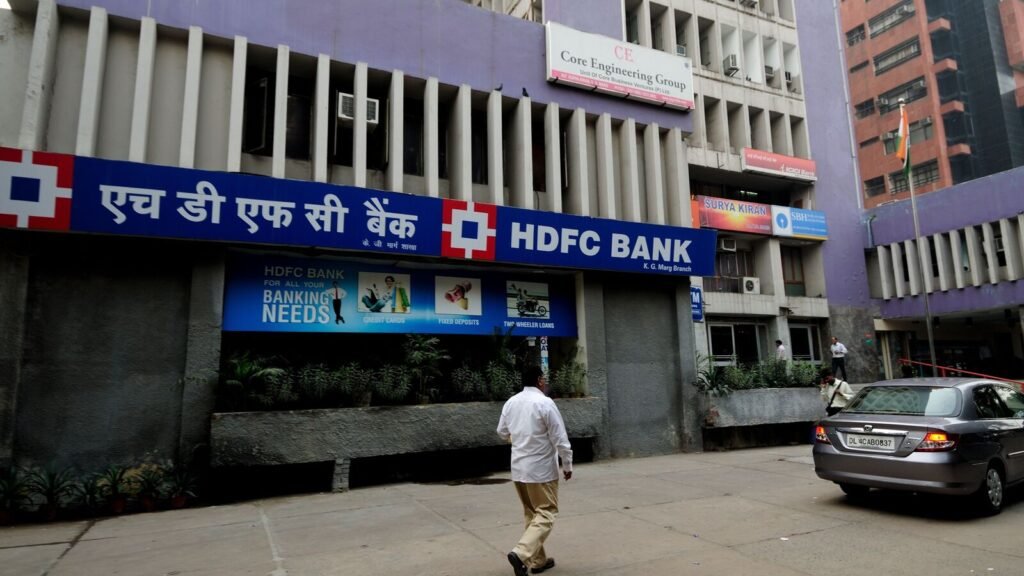HDFC Bank says moderation in credit growth opportunity to improve loan-deposit ratio

Moderation in system credit growth and a strategy to grow loans slower than the industry average together present HDFC Bank an opportunity to boost its credit-deposit ratio faster than anticipated, MD and CEO Sashidhar Jagdishan said.
“We will bring down CD ratio faster than what we had anticipated in the past. In terms of the glide path for credit growth, in FY25, we would probably grow slower than the system. In FY26, we may be at or around the system growth rate and in FY27, we should be faster than the system growth rate,” MD and CEO Sashidhar Jagdishan said in a call with analysts, adding that regulatory comments suggest convergence of system loan growth and deposit growth rates during this period.
“It may coincide over the next 2-3 years with a change in the credit environment. We have been witnessing stable asset quality and so, when the positive cycle changes in the next 2-3 years, we want to be well-positioned to capture the incremental growth seen pre-merger. That’s one of the reasons why we are accelerating bringing down the loan-deposit ratio,” he added.
Chief financial officer Srinivasan Vaidyanathan said the bank had earlier guided that it would take 4-5 years for the LDR to reach the historical level of “mid to high 80s”, but is now seeing an opportunity to achieve this in 2-3 years.
The bank’s CD ratio had jumped from 86-87% earlier to 110% following the amalgamation of erstwhile parent HDFC Ltd effective July 2023. The ratio is currently at around 100%.
HDFC Bank pushing for higher deposit growth than loans
To improve the CD ratio, HDFC Bank has been pushing for higher deposit growth as compared to loans. Highlighting that it is better economics to fund credit with more deposits and less borrowings, Vaidyanathan said the share of borrowings in funding has fallen to 16% from 21% immediately after the merger. Pre-merger, the share of borrowings was around 8%.
“We do have some way to go to keep moving this down, and it will not happen in one year,” Vaidyanathan said, adding the objective is to get the CD ratio down to “high 80s as soon as possible”.
Vaidyanathan said the bank has a market share of 11% on the liability side, but only 6% in terms of distribution, which means that deposits are two-fold the distribution capacity. He said deposit growth has been around 15-18%, giving the bank the benefit of 50-70 bps market share on an incremental basis over the past 3-5 years. With liquidity conditions starting to normalize, the bank expects to continue to position itself to gain this pace of market share, he added.
Deposits for the bank rose 15.1% year on year to ₹25.0 trillion as of 30 September. Current account and saving account (CASA) deposits were up 8.1%, comprising 35.3% of total deposits. The 19.3% increase in time deposits reflects consumers’ expectations of a rate cut soon, the management said.
Credit growth, quality
While retail disbursements are going up for the bank, they will take some time to reflect on the book as the bank looks to maintain this momentum for the next 12-18 months, Jagdishan said.
“But we will definitely be ahead of the curve and should capture the right customer segment at the right price, going into the future. That’s the thought process, but we are very watchful of what is happening in the environment and ecosystem,” he said.
Gross advances grew 7% on year to ₹25.2 trillion by the end of September. Retail loans were up 11.3% and commercial and rural banking loans by 17.4%. Corporate and other wholesale loans were lower by 12.0%. Overseas advances constituted 1.7% of total advances.
Growth on the wholesale side is expected to remain muted given competitive pricing in the segment. Extremely fine long-term pricing by PSU banks is especially constraining private lenders’ ability to drive up rates in this segment, where transmission of RBI’s 250 bps repo rate hike has been much lower compared to bond market spreads, Vaidyanathan said. The bank’s wholesale loan portfolio declined 2.8% sequentially.
The largest private sector lender has also embarked on a 3-5-year strategic initiative for loan securitization. It sold secured assignment loans worth ₹19,000 crore in Q2 taking the total loan securitization to ₹25,000 crore for the last two quarters, largely in the mortgage segment.
“(This is) more in mortgages where we are interested in customer relationships rather than balance sheet growth. And for that, if the product has to be packaged into securitization, we are okay with it, because balance sheet light is the right model,” he said, adding that this will be scaled up in the next few years, especially in the loan against property segment.
Jagdishan believes this cautious credit growth is good for the bank given the emerging credit quality scenario. Growth in unsecured loans for the bank has moderated to 9-10% from 10% in FY24 and 19% in FY23. In comparison, the rate of growth for the industry slowed to 21% in FY24 from 28% in FY23.
“For a couple of years, we have been calibrating our growth depending on early indicators. The calls taken by our credit architecture have come out well, and as of today, we are in a very comfortable position.,” he said, adding that while there are risks in the system, he is not “too worried” about asset quality.
Gross non-performing assets (NPA) ratio worsened slightly to 1.36% as of September 30 from 1.33% a quarter ago and 1.34% a year ago. Net NPA ratio stood at 0.41%.
Catch all the Industry News, Banking News and Updates on Live Mint. Download The Mint News App to get Daily Market Updates.
MoreLess








